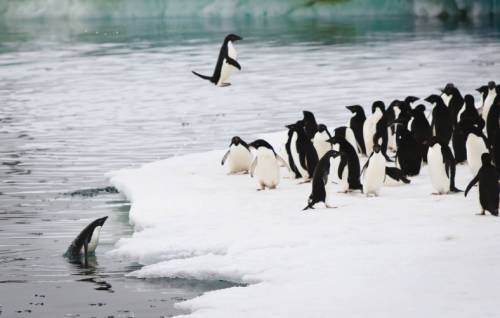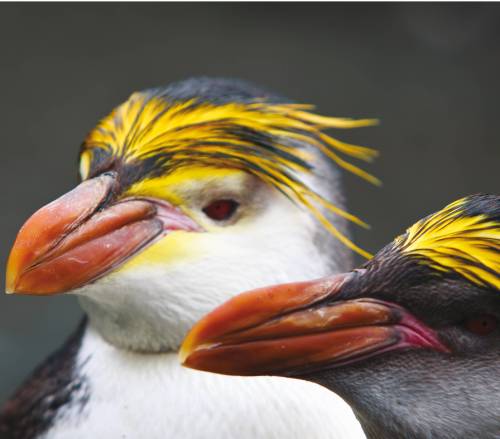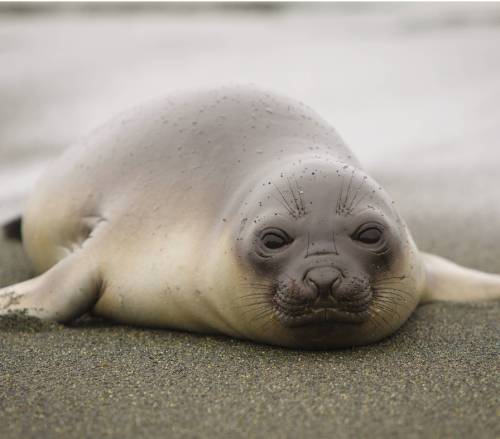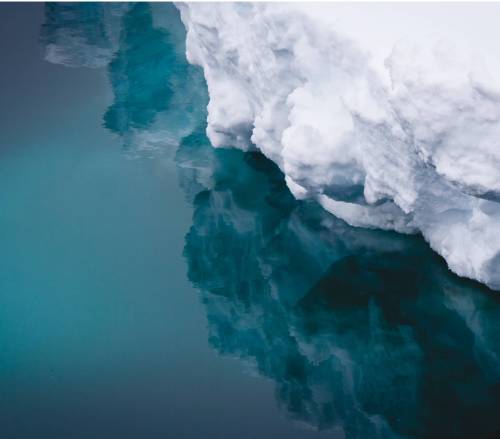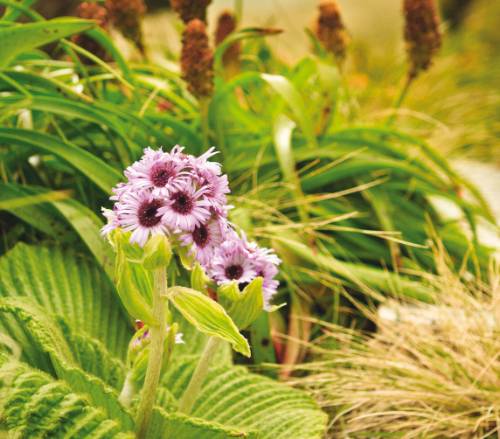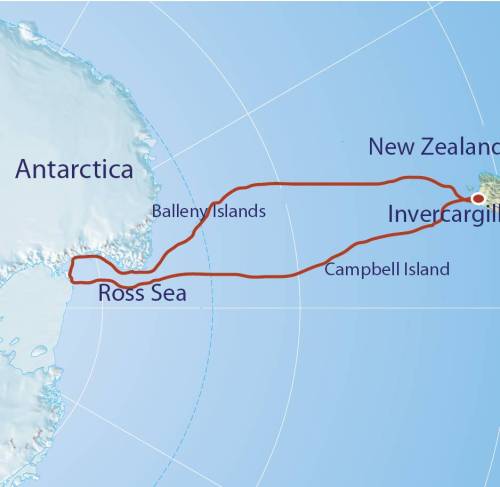Ross Sea - Footsteps of Scott & Shackleton
Ross Sea - Footsteps of Scott & Shackleton
$29827
Ross Sea - Footsteps of Scott & Shackleton
28 Days Starting in Queenstown and ending in
Visiting: Antarctica
Tour Overview
The ultimate Antarctic Voyage to the very heart of Antarctica. The Ross Sea is one of the most remote regions in the world and is only accessible for two months each year when the ice thaws. Steeped in history, the gateway was discovered by Sir James Clark Ross in 1842. It was to the Ross Sea region that many of the most famous explorers and adventurers came. They included Borchgrevink, Scott, Shackleton, Amundsen, Richard Byrd, Sir Edmund Hillary and others. We plan to visit historic huts which capture the history of these explorers and their achievements. The Ross Sea region is the breeding ground for millions of Adelie and Emperor penguins and we have regular encounters with both these species. New Zealand, America and Italy maintain scientific bases in the Ross Sea and welcome the few visitors that come each year. Our Ross Sea Expedition includes Subantarctic Auckland, Campbell and Macquarie Islands and aims to visit Cape Adare at the tip of the Ross Sea, home to the largest Adelie Penguin rookery in Antarctica.
Highlights
Itinerary
Day 1 : Join Queenstown
Arrive in Queenstown, New Zealand’s world famous alpine resort town. Guests should make their way to the designated hotel where we will spend the first night of the expedition. This evening there will be an informal get-together at the hotel for
dinner; an excellent opportunity to meet fellow adventurers on your voyage and some of our expedition team.
Day 2 : Depart Port Of Bluff
Today we enjoy breakfast in the hotel restaurant and have the morning free to explore Queenstown before returning to the hotel for lunch and departing for the Port of Bluff to embark your ship. You will have time to settle into your cabin and familarise yourself with the ship; we will also take the opportunity to conduct a number of safety briefings. You are invited to join the expedition team in the Observation Lounge and up on the Observation Deck as we set our course to The Snares and our adventure begins.
Day 3 : The Snares Islands
North East Island is the largest of the Snares, the first group of Sub-Antarctic Islands that we visit. This one island is home to more nesting seabirds than in all of the British Isles. We arrive early in the morning, and as landings are not permitted we will cruise along the sheltered eastern side by Zodiac. Snares Crested Penguins are plentiful around the coast, as are the Cape Petrel and Buller’s Albatross that nest here later in the season. Cruising in the sheltered bays, we should see the endemic Tomtit and Fernbird. And since an estimated 60 million Antarctic Terns, White-fronted Terns and Red-billed Gulls nest among the Snares, we are quite likely to spot a few. Mottled Petrel, Diving Petrel and Broad-billed Prion are all also in the vicinity.
Day 4 : Auckland Islands
The Auckland Islands, one of the largest of the Subantarctic groups of islands, have a most colourful history of discovery and attempted settlement. Forested by gnarled and windswept Rata, Enderby is perhaps the most beautiful of all the Sub-Antarctic islands. It has a low plateau of scrubland and cushion bog. We will enjoy the extensive Bulbinella rossii fields, the regenerating patches of Anisotome latifolia and the red and white gentians. The island enjoys a much milder climate than most Sub-Antarctic Islands because of its location. It is also home to the rare Hooker’s Sea Lion, which breed each year on the beach at Sandy Bay. In the forest behind the beach we find Bellbirds, Red-crowned Parakeets and the friendly Tomtits. Yellow-eyed Penguins also nest in the forest and under the tangled divaricated shrub Myrsine divaricata. You can see them as they travel backwards and forwards across the beach to their nests, especially in the evenings. On the more open country beyond the Rata forest we find nesting Royal Albatross and the endemic Auckland Island Dotterel. There is also a good chance of seeing the endemic flightless Teal at Derrycastle Reef as we explore this island. On shore there will be several options, some longer walks, some shorter walks and time to spend just sitting and enjoying the wildlife. The walking is relatively easy, a board walk traverses the island to the dramatic western cliffs from there we follow the coast on the circumnavigation of the island.
Day 5 : At Sea
At sea we will have a series of lectures supported by videos of the biology and history of the Sub-Antarctic Islands and the Southern Ocean. The Sub-Antarctic Convergence zone is very close to the area we will sail through, so we expect the bird life to reflect this as we approach Macquarie Island. Birds we may spot include the Wandering Albatross, Royal Albatross, Black-browed Albatross, Light-mantled Sooty Albatross, Salvin’s Albatross, Grey-headed Albatross, Northern and Southern Giant Petrel, Sooty Shearwater, and Little Shearwater. We will endeavour to spot the Fairy Prion, Fulmar Prion and Antarctic Prion – never an easy task – but we should get some great views. There are also many species of Petrel to be on the look-out for including the Soft-plumaged Petrel, Mottled Petrel, White-headed Petrel, Wilson’s Storm Petrel, Black-bellied Storm Petrel and Common Diving Petrel.
Day 6 : Macquarie Island
Macquarie Island, Australia’s prized Subantarctic possession, is a small but impressive sliver of land supporting one of the highest concentrations of wildlife in the Southern Hemisphere. Millions of penguins of four different species - King, Rockhopper, Gentoo and the endemic Royal – breed here. We plan to spend two days observing the best wildlife areas on the Island and visiting the Australian scientific base where Tasmanian Park Rangers will take us on a tour of the station and nearby areas. The King Penguin rookery at Lusitania Bay is spectacular. A welcoming committee will likely porpoise around our Zodiacs as a quarter of a million King Penguins stand at attention on shore. In the centre of the rookery, rusting condensers are grim reminders of a time when scores of penguins were slaughtered for their oil. Now their offspring have reclaimed this territory. At Sandy Bay, a Royal Penguin rookery teems with feisty little birds trotting back and forth, golden head plumes bobbing as they march to and from the shore. All 3 million of the world’s Royal Penguins breed on Macquarie Island. Large groups of Elephant Seals slumber on the sandy beaches and in the tussock grass further inland. These giant, blubbery creatures barely acknowledge our presence, lying in groups of intertwined bodies, undergoing their annual moult. Younger bulls spar in the shallow water, preparing for their mature years when they will look after their own harems. Other wildlife includes Fur Seals, four species of nesting Albatross – Wandering, Black-browed, Greyheaded and Light-mantled Sooty – as well as many other species of bird. Macquarie Island is the single richest concentration of wildlife on our voyage, so we will aim to fit in as much as possible.
Day 8 : At Sea
Soaring Albatrosses and Petrels circle the vessel as we steam ever southward through the Southern Ocean. Lectures now concentrate on our next destination – the Antarctic’s Ross Sea region. We will pay attention to water temperatures so that we know when we cross the Antarctic Convergence into the cold but extremely productive Antarctic waters. Drifting icebergs carry vivid colours and come in extraordinary shapes. Each is a unique, natural sculpture. The Captain will manoeuvre the ship in close for your first ice photography and announce a special celebration as we pass the Antarctic Circle and into Antarctica’s realm of 24-hour daylight!
Day 11 : The Ross Sea
During our time in the Ross Sea region, we will visit the highlights of Antarctica’s most historic region. Due to the unpredictable nature of ice and weather conditions, a day-by-day itinerary is not possible. The Captain and Expedition Leader will assess daily conditions and take advantage of every opportunity to make landings or send you out in the Zodiacs. Our program emphasises wildlife viewing, key scientific bases and historic sites, as well as the spectacular scenery of the coastal terrain, the glaciers and icebergs of the Ross Sea. Zodiacs and/or hovercraft are used on a regular basis for sightseeing and landings. Whilst specific landings cannot be guaranteed, we hope to visit the following as well as explore for new, perhaps previously unvisited areas:
Cape Adare
Cape Adare’s bold headland and the Downshire Cliffs greet us as we approach Cape Adare – ice conditions permitting – at the tip of the Ross Sea, the site of the largest Adélie penguin rookery in Antarctica. Blanketing the large, flat spit which forms the Cape is the huge rookery which now, at the height of summer, numbers up to one million birds – an absolutely staggering sight. You will never forget your first experiences in a ceaselessly active and noisy ‘penguin city’, where the dapper inhabitants show no fear of their strange visitors. Our naturalists will point out various aspects of their lifestyle and, by sitting down quietly, one may observe the often-comical behaviour of the penguins, courtship displays, feeding ever-hungry chicks, territorial disputes and the pilfering of nest material. Curious penguins often come and visit us very closely, presenting superb photographic opportunities. Surrounded by a sea of penguins, we will find Borchgrevink’s Hut, the oldest in Antarctica, an overwintering shelter for the first expedition to the Antarctic continent in 1899. It is a fascinating relic of the ‘Heroic Age’ of Antarctic exploration and we are able to inspect the interior, which still contains artifacts of the early explorers. One thousand feet up in the hills behind Cape Adare is the oldest grave in Antarctica, that of 22 year-old Nicolai Hansen, a member of Borghgrevink’s expedition.
Terra Nova Bay
Baia Terra Nova, an Italian summer research station, is one of the most modern and attractive in Antarctica. The scientists and support staff here are always most hospitable and enjoy showing us around their lonely but beautiful home. The Italians conduct many streams of scientific research and also claim to have the best ‘caffe espresso’ in Antarctica!
Cape Hallett
The enormous Admiralty Range heralds our arrival at Cape Hallett, near the head of the Ross Sea. The scenery here is wild and spectacular; mountains rear up from the sea to over 4,000 metres and giant glaciers course down from the interior to the water’s edge. We land next to an abandoned American-New Zealand base, home to large numbers of Adélie Penguins and Weddell Seals.
Ross Island – Mount Erebus / Cape Bird / Shackleton’s Hut / Scott’s Hut
At the base of the Ross Sea we arrive at Ross Island, dominated by the 13,000 foot high volcano, Mt Erebus. The New Zealand Antarctica programme maintains a field station at Cape Bird, where scientists study many aspects of the region’s natural history, including the large Adélie Penguin colony. Scientists may be at he field station when we arrive. At Cape Royds we visit Sir Ernest Shackleton’s hut, built during the Nimrod polar attempt of 1907- 1909. Lectures explain many facets of Shackleton’s amazing expeditions. He was possibly one of the greatest, and certainly one of the most heroic of the Antarctic explorers. Though the legendary explorers are long gone, the area around the hut is far from deserted, having been reclaimed by the original inhabitants of the area - thousands of Adélie penguins – in the world’s southernmost penguin rookery. Also found on Ross Island is Cape Evans, the historic site of Captain Scott’s second hut, erected in 1911 and beautifully preserved by the staff at New Zealand’s Scott Base. It stands as testimony to the rigours faced by pioneering explorers. Inside the hut we will witness the living conditions almost exactly as they were when Scott, Wilson and Ponting occupied these quarters. Behind the hut, Mt. Erebus looms above with its plume of white smoke spiralling up from the still-active inferno in its bowels.
Ross Ice Shelf
The largest ice shelf in Antarctica, the Ross Ice Shelf is also the world’s largest body of floating ice. A natural ice barrier, at times it creates hazardous weather conditions, with sheets of snow blown at gale force by the katabatic winds coming off the polar ice cap. Just 800 miles from the South Pole, this daunting spectacle prevented many early Antarctic explorers from venturing further south. From the Ross Ice Shelf we cruise eastward along the Shelf front, with its spectacular 30 metre high ice cliffs, which sometimes calve tabular icebergs.
Franklin Island
This rugged Island, deep in the Ross Sea, is gouged by numerous glaciers and is home to a large Adélie Penguin population and other nesting seabirds. We will attempt a Zodiac landing near a rookery as well as exploring the coastline. If a landing is achieved, there will be an opportunity for those who are feeling fit to climb to the summit of the Island.
Possession Islands
These small, rugged and rarely visited islands lay off the shore of Cape Hallett. An Adélie Penguin rookery, numbering tens of thousands of birds, blankets Foyn Island. Observe their busy and sometimes humorous activities, with the Admiralty Mountains forming a superb backdrop across the water.
Day 23 : At Sea
Enroute to Campbell Island, take part in a series of lectures designed to prepare you for our visit to Campbell Island. Pelagic species abound here as they did enroute to Macquarie Island from the Auckland Islands. Above all, take the time to rest and enjoy shipboard life after the excitement of the Antarctic.
Day 26 : Campbell Island
Campbell Island is a place of rugged scenery and abundant wildlife. On this stunning island we will also see mega herbs which have been regenerated since the removal of sheep in the 70’s, and witness other wildlife such as Campbell Island Shags, Light-mantled Sooty Albatross and Sea Lions. We will also enjoy a walk to a large nesting ground of Southern Royal Albatross which provides excellent opportunities to get close to these magnificent sea birds.
Day 27 : At Sea
On our return journey, we will have the opportunity to reflect on the experiences we have had throughout our voyage. It is also a chance to ask any last minute questions of the lecturers. Tonight we will enjoy a farewell dinner as we complete the last stretch of our journey.
Day 28 : Disembark Port Of Bluff
Early this morning we will arrive in the Port of Bluff. After a final breakfast and completing Custom formalities we bid farewell to our fellow voyagers and take a complimentary coach transfer to either Invercargill or Queenstown Airports. In case of unexpected delays due to weather and/or port operations we ask you not to book any onward travel until after midday from Invercargill and after 3pm from Queenstown.
Note: During our voyage, circumstances may make it necessary or desirable to deviate from the proposed itinerary. This can include poor weather and opportunities for making unplanned excursions. Your Expedition Leader will keep you fully informed. Landings at the Subantarctic Islands of New Zealand are by permit only as administered by the Government of New Zealand. No landings are permitted at The Snares.
What's Included
-
27 breakfasts, 26 lunches and 27 dinners
-
1 night's hotel accommodation in Queenstown in a twin share basis
-
Transfer from hotel to ship on Day 1, and transfer from ship to hotel or airport on last day of trip
-
Comfortable cabin accommodation and use of all public areas on cruise
-
Services of expedition leaders
-
All sightseeing and shore excursions from the ship including the use of Zodiacs
-
Lectures, videos, slide and film shows and guide services
-
Port taxes and port charges imposed by government authorities
-
Pre-departure information
-
Mandatory landing fees
What's Not Included
Grading
Although there is no commitment to extended walking on this journey, we nonetheless want to keep the ‘accent on the active’. We therefore advise that any physical training you complete before undertaking the trip will be to good effect.
Accommodation
1 night hotel
A variety of cabins are available on the ship. Please ask us for details.
Wildlife
Apart from the deep sea, Antarctica is the oldest and largest self-contained ecosystem in the world. The animal world is very closely linked with the sea and is consequently to be found mainly on the periphery of the continent. With the exception of a few insects, all forms of life capitulate in the face of the increasingly harsh climatic conditions further inland. The coastal regions are populated by sea birds such as petrels, albatrosses, skuas and penguins as well as marine mammals like the crabeater seal, leopard seal, Ross seal, Weddell seal, fin and right whale, and sea lions. The Antarctic sea regions contain the greatest quantities of animal protein on Earth.
Antarctica’s marine food chain
The most common Antarctic shrimp, krill, uses its front legs to catch microscopic unicellular algae known as diatoms. The word krill comes from the Norwegian and means “food of the whale”. All living creatures consume 90% of their food for their everyday activities and thus convert only 10% into body weight, meaning that nutritional value declines exponentially as one progresses through the food chain. The whale jumps these links in the chain by preying directly on krill rather than on fish or sea birds. A fin whale requires about 2-3 tonnes of krill per day to reach an impressive length of 24 metres and a weight of up to 80 tonnes.
Antarctic birds
Penguins represent half of the Antarctic bird population, nine-tenths of its biomass. These birds depend on the sea for their food. They eat about 4.7 million tons of food each month, mainly crustaceans and fish, but also squid. While penguins dominate the bird biomass, tube-nosed petrels constitute the majority of the breeding species. Other groups include cormorants, skuas, gulls, and terns.
It takes a tough bird to overcome Antarctica’s notorious inclemency. One might infer from the enormous concentrations of sea birds that do occur that the populations are invincible. They are not. The long isolation of Antarctic birds has produced an extraordinarily innocent and docile avifauna - a quality attractive to both scientific study and tourism, but one that leaves these highly vulnerable birds open to harm from human presence or mismanagement.
Natural factors such as storms or abnormally extensive sea ice can cause extremely high mortality in nesting areas. But Antarctic bird species have evolved to overcome these adversities. Human activity is another matter. On the evolutionary time scale, people and their machines have just entered the Antarctic scene. The birds have had little time to adjust. Studies have shown that even casual or occasional contacts with Antarctic bird colonies can adversely affect breeding success. After visits are ended or controlled, bird populations have been observed to return to former levels.
Today, much is known about some of these birds at breeding sites, but virtually nothing about the longer time they spend at sea.
Flora
Infertile and wasteland are two words one often hears in connection with the polar regions. Yet over 800 species of flowering plant flourish in the Arctic, though by contrast there are only two species of flowering plants on the Antarctic mainland since it is a long way from the next continent, a fact which reduces the chances of new plant species becoming established. The major part of Antarctica is also covered by eternal ice and the climate is much harsher than in most parts of the Arctic. In the few places where plants can grow, mosses and lichens play a bigger role than flowering plants. Some lichens even grow in the polar desert areas in the interior of Antarctica where the conditions are truly extreme. Arctic plants have to be very small to survive. A tall plant would be helplessly exposed to the sharp ice crystals with which the wind would constantly batter it.
Check out our Q&As
-
Who will be my travelling companions on the tour?
We have offices on three continents which means your travelling companions will be just that – international and wonderfully eclectic. Part of small group travel means that although travellers come from various locations and backgrounds, you will be travelling with like-minded companions who, like you, are keen to share the experience and forge lifelong friendships.
-
What about environmental impact?
We believe that adventure travel revolves around establishing a strong relationship with the people and environments in which we operate. Our responsible travel policies have been carefully developed to ensure that we minimise the impact of our presence and help to protect the regions we visit while contributing positively to the local community.
-
What should I pack?
Your pre-departure documents include a detailed packing list with items that you need to bring. While most of the equipment for daily activities is included in your tour cost, some items like helmets and hiking boots are best brought from home. The pre-departure documents also include information on layering and recommended brands for various items to ensure you are fully prepared for your trip.
-
Do you operate a “single share” option and how does it work?
Yes. World Expeditions does not require single travellers to pay a surcharge for travelling alone on the vast majority of our trips. Our holidays are primarily on a twin share basis, so if you are joining the group as a solo traveller, we will match you with someone of your own gender. The choice is yours however; if you prefer not to share, we do offer single supplements for private occupancy.
-
Are tips included in my trip price?
Tips are not included in the tour cost. Tipping is a personal thing, do not worry about how much, or when, to tip. Tipping guidelines are provided for certain destinations in our pre departure information upon booking, however the best advice will be provided by your tour leader.
-
Am I suited to small-group travel?
We recognise that many of our travellers have not been on a ‘group trip’ before. Yet what our departures provide is both structure and flexibility, allowing you plenty of freedom within the framework of the itinerary. You’ll find that with our maximum group size at 16, you’ll travel in a minimal impact style with a great group of like-minded travellers.
-
Can you advise which vaccinations are recommended?
While our pre-departure kit provides information on vaccinations, we suggest that you consult your doctor, local government inoculation centre or a travel medical specialist in order to get the most current advice regarding vaccination requirements.
1 Select your preferred date
Tuesday - Monday
Jan 07, 2025 - Feb 03, 2025Sunday - Saturday
Feb 02, 2025 - Mar 01, 2025Saturday - Friday
Jan 10, 2026 - Feb 06, 2026Thursday - Wednesday
Feb 05, 2026 - Mar 04, 2026Book with Confidence
-
Transfer as credit to Future Tours
World Expeditions allows you to transfer existing payments to a future tour to avoid cancellation fees if you can't travel and inform world expeditions, 70 days before departure.
-
Low Deposit
World Expeditions requires a minimum deposit of 250 GBP per person or the full booking value, whichever is less, with the final balance not due until 70 days before departure.
-
Cancellation Policy
We don't charge a cancellation fee, here is a summary of world expeditions charges.
Up to 70 days before tour starts: Forfeit 100% of deposit.
At 69 days before tour starts: Forfeit 50% of booking price.
At 35 days before tour starts: Forfeit 100% of booking price.
